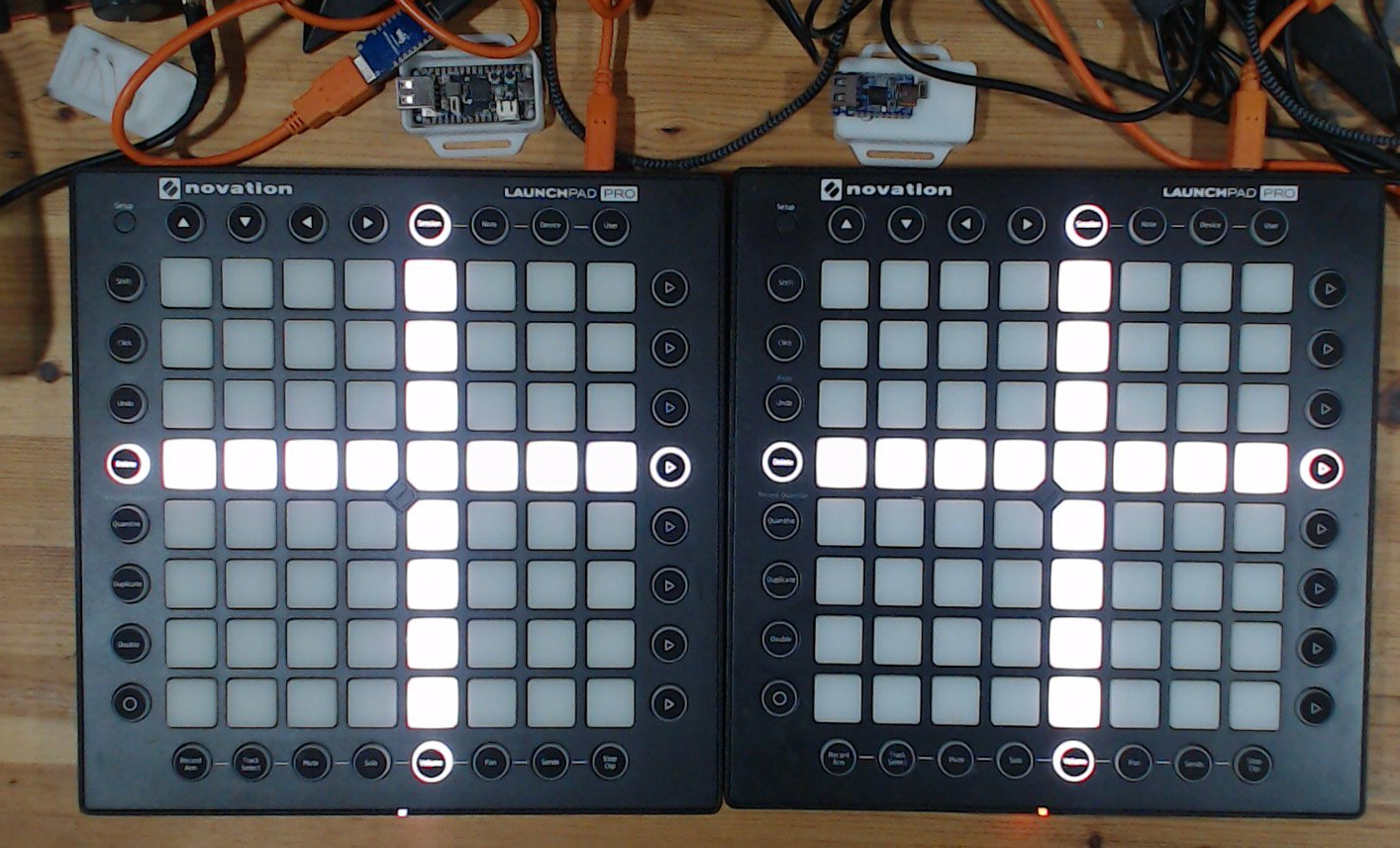After working on other projects using dual-USB microcontrollers, I’m back together with my long-time muse, the Novation Launchpad.
One of the first things I tried when I wrote code for my first dual-USB board was hooking it up to a Novation Launchpad. My heart sank, as it wouldn’t even power on. I set that aside for a while and created the latest version of the “Cheatar”.
I decided to dive back in afterward, and step by step chipped away at the problems, until I ended up somewhere halfway decent.
Power and Connectivity
I started trying to figure out the power. I overthought this part of the process, hooking up a USB power monitor and making sure the Launchpad wasn’t drawing too much power for the host port. I needn’t have worried, it never even drew enough to show up on my tester (which means it was drawing less than 50 mA).
I was scratching my head until I decided to crib from someone else’s homework for a bit. I had a board lying around with OGX Mini on it, and sure enough, the Launchpad powered on when connected to its host port.
Looking at the code, I learned that the Adafruit unit I was using doesn’t turn on power to the USB port by default. There’s a GPIO pin you need to send a signal to. This actually seems really useful, as you can add power save modes, turn off the client device on a schedule, et cetera. It’s slightly less useful if you don’t know the switch is there, but once I updated my startup function, the Launchpad got the power it needed when connected to the microcontroller running my code.
This led to the next hurdle, which was the “fireworks mode” that the Launchpad displays when it has power but isn’t connected to a host (for example, when the computer is asleep but the USB hub still has power).
From here on out, I was bouncing between the TinyUSB source, the Pico PIO USB source, and any examples I could find, like this one.
Step by step, I chipped away at the things that didn’t work. The Launchpad
started waking up and acknowledging that I was connecting to it. I initially
couldn’t send messages to the host port at all, but found the settings I need in
the
usb_midi_host
project. I also found the buffer settings that initially limited me to only
updating about a third of the Launchpad.
Fixing things was mainly a process of copying things from a “known good” solution and tweaking until I had just the settings I need, and then leaving comments for myself and any other interested parties about what the settings mean (or seem to mean).
If you want to see how I eventually got things working, you can see everything in the GitHub repository.
The End Result
I’m able to read inputs from Launchpads connected to both the “client” and “host” USB ports on the microntroller, including simultaneously:

On the client side, this requires a little bit of help, here’s a screenshot of
how I connected everything using midiconn:
![]()
With everything set up, both Launchpads function as both controls and displays. You can see a full side-by-side demo here on my YouTube channel:
What’s Next?
The Launchpad supports two ways of “painting” a UI. One is to send “note” messages to the Launchpad that correspond to the pad (note) and colour (velocity) you want to “paint”. This is fine for simple interfaces, but slow and bandwidth-intensive for complex animations.
The Launchpad also listens for System Exclusive messages, which are vendor-specific messages that act as a kind of API to configure a MIDI device. “Sysex” messages are faster and require far less bandwidth. It’s a big deal for things like the “Polar Vortex” that really require sysex messages to operate at speed.
Unfortunately, at this point I’ve only figured out how to get sysex working on the “client” side, the same messages fail when sent to the “host” port. I’ll need to debug things on the host side, look for better examples, and talk with other people working in the space to figure that bit out.
In the mean time, what I have now is already enough to revive a few older projects, and to work on compatibility with other Launchpad models. Stay tuned for whatever comes next, it should be a fun time, especially if you have a Launchpad.